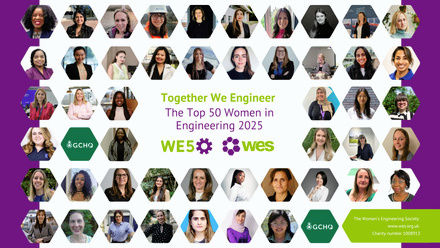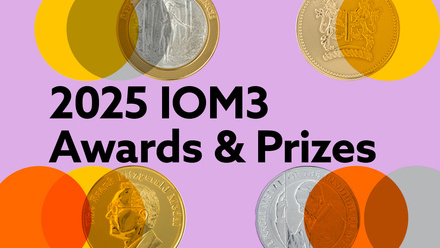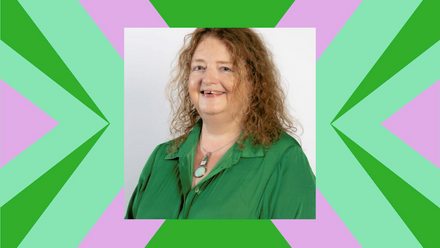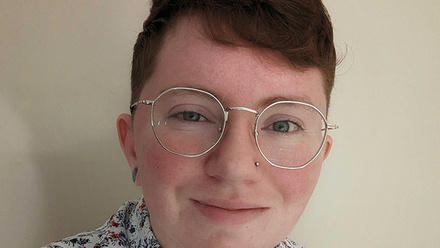Reminiscing South East Plastics and Rubber Group
The SEPRG was dissolved in a ceremony in London on 24 September in the presence of current Chairman Dr Richard Skipper CEng FIMMM.
The following piece was written by the past Chairs of the South East Plastics and Rubber Group, Charles Brown CEng MIMMM, Dr Alicia Chrysostomou MIMMM, Marion Ingle CSci FIMMM, Dr Mathew Philip CEng FIMMM and Dr Richard Skipper CEng FIMMM.
Within the IOM3, the South East Plastics and Rubber Group (SEPRG) has represented the interests of members of the polymer community, scientists, designers and processors, academics and industrialists since 1992. It covered a geographical region stretching from the south coast to East Anglia and from the east coast to Oxfordshire. Many prominent companies actively supported the group by releasing employees to attend meetings, hosting meetings and funding events.
The SEPRG inherited the region from the London Section of the Plastics and Rubber Institute (PRI) and the PRI itself was formed in 1975 with merger of the Institute of the Rubber Industry (IRI) founded in 1921 and the Plastics Institute (PI) founded in 1935. Charles Brown CEng MIMMM, Treasurer of the SEPRG joined the IRI as an Associate in 1966 and the PI as an Associate in 1967. Having served as a Committee member for theLondon Section of the IRI from around 1970, following which Charles became Treasurer of the London Section of the PRI in 1981. In 1982, Charles was awarded a Fellowship of the PRI (FPRI) for his services to the Londonsection. He then served as Chair in 1985/86 before reverting to become Treasurer, first of the London Section and then the SEPRG which he has remained until the present day. Charles comments that his employer of 30 years, Dunlop was very understanding and allowed him as much time as he required, within reason, to fulfill his role as Chair and, indeed, committee member, certainly wherever Rubber technical events were held by thesection. He remains a Fellow of IOM3 (FIMMM), although now retired.
In 1992, the PRI merged with the Institute of Metals and other bodies representing Ceramics and Composites to form the Institute of Materials. The local Metals Societies became Materials Societies. The local Plastics and Rubber Sections became Polymer Groups.
Dr Mathew Philip CEng FIMMM joined the committee of the London Section of the PRI in 1988 after being brought onto its sub-committee in Brighton. He first became a member of the PRI as a research student in 1978. It was inevitable, that as the new Senior Lecturer in Polymer Engineering at Brighton Polytechnic, that he would be encouraged to join the committee in London a few months later.
At the merger of the institutes into Institute of Materials, the London Section of the PRI became the South East Plastics and Rubber Group. Charles Berra had been the last Chair of the London Section. Deborah Ward CEng FIMMM (British Aerospace) replaced him in 1992 as Chair of the SEPRG, serving a two-year term. Mathew replaced Deborah in 1994 as Chair and served until 1996. Martin Webster (Hoechst UK/Ticona) became Chair in 1996.
The main activity of the SEPRG continued to be organising events to facilitate knowledge transfer, networking, supporting membership and attracting new members. The hundreds of events over the years included industrial visits, such as the London Rubber Company and the Body Shop factory in Sussex, technical lectures with speakers from industry and academia, coach trips to the triennial Interplas Exhibition in Dusseldorf, an annual general meeting, and various social events including an annual dinner.
As Charles points out, ‘a highlight of the year was the annual dinner/dance’. It certainly was, for many years;held at the Royal Lancaster Hotel in London it was a lavish affair attended by 400 -500 persons with thecommercial support of major suppliers to the industry, such as Shell, BP, International Synthetic Rubber Co(ISR), Cabot Carbon, Columbian Int, Bayer, Goodyear Chemicals, ICI and others who used the event to entertain their customers, myself included as a purchaser of their products, based in our London HQ.
The event was always designed for us to make a modest profit, which then helped to fund the technical meetingsin terms of room hire, speakers’ travelling costs, light refreshments, where applicable. Unfortunately, the eventeventually died down in the late 1990's as industry closed in the South of England and graduated northwards, or abroad.
The London Section had some 1500 members at the time of the merger. As many of the plastics processing companies either closed or moved north with industry in the 1990s, the emphasis of the work of the SEPRG shifted towards materials and products, students and the universities and colleges of technology. The numbers steadied to about 650 members. There were 621 members in SEPRG in 2001.
Ayaz Siddiqui and Alicia Chrysostomou MIMM joined the committee initially as students. At my last meeting as Chair, we agreed to set up what became known as the Polymer Circus. On the committee, Ayaz took responsibility for planning and running the events. They were intended for school children aged 13 to 15. The events were run at Brunel University by Ayaz Siddiqui, at Brighton University by Mathew Philip CEng FIMMM and at the London School of Polymer Technology based at the University of North London by Bob Dyson. In the first year, the main speaker was Professor Heinz Wolff from Brunel University. He was already well-known as the TV presenter of ‘The Great Egg Trace’ (BBC2). In Brighton, he enthused the children by making pancakes on a hotplate and used the property transformation during the cooking process to explain polymer behaviour. It was a great success. The programme continued for several years and drew good numbers of children from local schools. Johnny Ball who made science fun for children in his TV programmes, had been guest speaker at our Annual Dinner one year, which is how we nabbed him for the Polymer Circus the following year. Trevor Bayliss, the inventor of the clockwork radio also came another year.
As with the London Section of the PRI, the SEPRG held meetings in London and several other centres. It was dependant on local committees to hold meetings. There were bases at what was the University of North London, at Brunel University and at Brighton University. At Brighton we had our own sub-committee made up of six people and we organised about six meetings annually. In the early 1990s, the meetings were organised with local industry in mind and polymer processors from Kent and East and West Sussex would attend. By the end of the decade, the numbers from industry had decreased but the students from Brighton University made up the shortfall. Talks from Ferrari, Lotus, British Gas and others helped highlight the application of plastics and rubbers in an engineering context. Bob Dyson was particularly active in organising visits for Polymer students from University of North London to Brighton and Brunel Universities. Alicia, and later Marion Ingle CSci FIMMM organised the technical programme for the specialist polymer students at the UNL which then became the London Metropolitan University Polymer Centre in 2004.
The activities of the SEPRG were facilitated by a small, elected committee of people from industry and academia, who collectively gave many years of their time in a voluntary capacity to the polymer community. The many stalwarts of the committee included Maurice Cain who was Chair of the International Rubber Studies Group and had been long-time Secretary from the time of the London Section of the PRI. Dr Bob Dyson (University of North London) took over as Secretary from Maurice Cain in about 1993. The Treasurer Charles Brown CEng MIMMM quietly monitored the finances throughout the life of the SEPRG.
As the new millennium approached, the committee was keen to celebrate the achievements of the polymer industry with a conference. In January 2001, a ‘Celebration of 150 years of Plastics and Rubber’ was organised by Ron Copleston and Mathew Philip. It was run with the support of the Plastics Historical Society and held at 1, Carlton House Terrace. Annual joint meetings then followed for another two years.
The committee meetings and events always included food and drink, were good fun, and many professional relationships and friendships were formed. Some people even found employment though attending these events. Although the events were aimed at polymer professionals and students, they were open to all and proved very popular with design students who were looking for technical support.
Support for university students involved hosting events to introduce the IOM3 to students, sponsoring their IOM3 membership and sponsoring travel costs for students to attend exhibitions and factory visits. We also offered sponsorship to schools to join the IOM3 schools affiliate scheme.
The SEPRG worked with other groups within the IOM3, such as the Plastics Historical Society, the Packaging Society, and the Rubber in Engineering Group, organising joint events and supporting each other’s events. We attended local society forums and provided representatives to the Polymer Society Board. We also supported other organisations with a polymer interest such as the steering group of the Museum of Design in Plastics (MODIP) in Bournemouth and inviting members of the Hidden Polymers project (an organisation procuring technical support for designer makers) to technical events.
Sadly, the decline of the plastics and rubber industry in the UK led to the closure of polymer degree and BTEC courses and the demand for technical events declined. The events at Brighton University stopped as Mathew Philip moved to the London Metropolitan Polymer Centre in 2005 as Academic Leader. The closure of the polymer courses at London Metropolitan Polymer Centre in 2012 was very significant as the polymer staff were particularly active within the SEPRG. It became increasingly difficult to organise events. At this point, the SEPRG actively reached out to universities with support in the form of a scholarship for short polymer-related projects. The demand for such support also declined as student work became more multidisciplinary.
Before 2010 it was clear that the traditional support for the SEPRG was on a downward trajectory. Industry had moved away, either up North or to developing countries. New polymers, and the research for new processes to produce them, were no longer required. University research and polymer courses in the UK were declining or closing and with that the SEPRG needed to look for new interests. Dr Richard Skipper’s background in industry, (although uniquely is the only Englishman to have been awarded a DSc in Chemistry from the Jagiellonian University) from contributing to making the first polyethylene washing up bowl to inventing the low smoke zero halogen cable and wiring coating used in undergrounds, aircraft and military vehicles led the SEPRG to a change in emphasis towards manufacturing. In 2009 lectures on ‘How to reduce manufacturing costs’ and ‘How to compete with Chinese’ were on the lecture list, and we were aware of the what the future would be without changes; those changes unfortunately never happened.
Joint visits with the other societies, such as the Packaging Society, were organised to manufacturing sites such as to the first East London recycling plant when this technology was still in its infancy, to the 150ft tall Pirelli wire and cable coating tower at Eastleigh (a year later moved abroad and the site closed) and to the Borehamwood fire test facility. One AGM was even held in a pod at the top of the London Eye and can rightly claim to be the pinnacle of all our meetings! Financial support for polymer research was offered but only one award was made to the only applicant - a reflection of how activity in the polymer field had declined over the last decade. The research project, on polymeric sulphur, provided an interesting technical meeting at the IOM3 HQ at Euston Road and was published in Materials World in November 2018. On 17th December 2018 there was a lecture on ‘Trekking in the Himalayas on the Tibetan Border’ followed by wine tasting; little did those attending know this would be our last meeting.
Contributions from:
Charles Brown, Alicia Chrysostomou, Marion Ingle, Mathew Philip, Richard Skipper
List of Chairpersons of the SEPRG
Eur Ing Deborah Ward FIMMM (British Aerospace) 1992 – 94
Revd Dr Mathew Philip CEng FIMMM (University of Brighton) 1994 – 96
Martin Webster (Hoechst UK / Ticona) 1996 – 98
Colin Simpson (Hatcham Rubber) 1998 – 2000
Dr Ayaz Siddiqui (Engineering Council) 2000 – 02
Tim Davies (Crompton Corporation) 2002 - 04
Peter Lewis (BSI) 2004 - 06
Dr Alicia Chrysostomou (London Metropolitan University) 2006 – 08
Marion Ingle (London Metropolitan University / Sandberg LLP) 2008 – 10
Dr Richard Skipper CEng FIMMM, FRSC (Raychem Ltd/TYCO) 2010 -18







